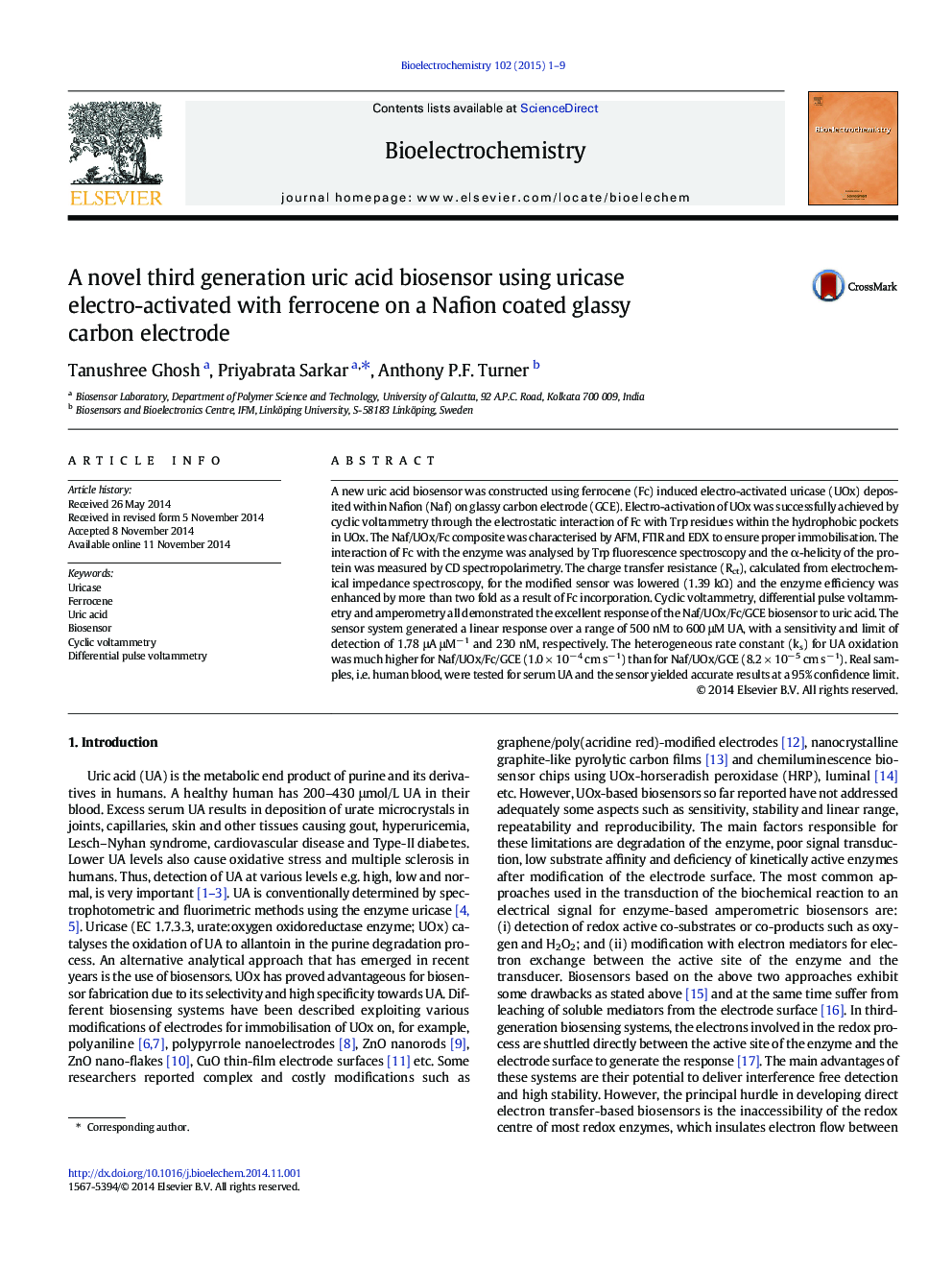| کد مقاله | کد نشریه | سال انتشار | مقاله انگلیسی | نسخه تمام متن |
|---|---|---|---|---|
| 1267175 | 1496910 | 2015 | 9 صفحه PDF | دانلود رایگان |

• Uric acid biosensor using ferrocene induced electro-activated uricase was developed.
• Catalytic efficiency (Kcat/Km) of electro-active uricase was increased to > 2-folds.
• Impedance spectroscopy predicted low charge transfer resistance on electro-activation.
• Low detection limit (230 nM) and high sensitivity (1.78 μA μM− 1) were obtained.
• Human blood was successfully tested for serum uric acid (95% confidence; P < 0.05).
A new uric acid biosensor was constructed using ferrocene (Fc) induced electro-activated uricase (UOx) deposited within Nafion (Naf) on glassy carbon electrode (GCE). Electro-activation of UOx was successfully achieved by cyclic voltammetry through the electrostatic interaction of Fc with Trp residues within the hydrophobic pockets in UOx. The Naf/UOx/Fc composite was characterised by AFM, FTIR and EDX to ensure proper immobilisation. The interaction of Fc with the enzyme was analysed by Trp fluorescence spectroscopy and the α-helicity of the protein was measured by CD spectropolarimetry. The charge transfer resistance (Rct), calculated from electrochemical impedance spectroscopy, for the modified sensor was lowered (1.39 kΩ) and the enzyme efficiency was enhanced by more than two fold as a result of Fc incorporation. Cyclic voltammetry, differential pulse voltammetry and amperometry all demonstrated the excellent response of the Naf/UOx/Fc/GCE biosensor to uric acid. The sensor system generated a linear response over a range of 500 nM to 600 μM UA, with a sensitivity and limit of detection of 1.78 μA μM− 1 and 230 nM, respectively. The heterogeneous rate constant (ks) for UA oxidation was much higher for Naf/UOx/Fc/GCE (1.0 × 10− 4 cm s− 1) than for Naf/UOx/GCE (8.2 × 10− 5 cm s− 1). Real samples, i.e. human blood, were tested for serum UA and the sensor yielded accurate results at a 95% confidence limit.
Figure optionsDownload as PowerPoint slide
Journal: Bioelectrochemistry - Volume 102, April 2015, Pages 1–9